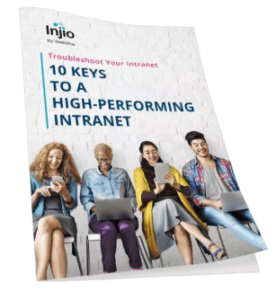With EOFY just around the corner, the race to make our balance sheets healthy and shiny is on. It is also a good time for reflection upon the investments that really make a difference to our organisations, now and in the future and the options to optimise these and our finances.
How disappointing that investment in your most valuable asset and greatest business expense – your people – can’t be amortised over their useful life. Sadly, Capital Expenditure (CapEx) accounting is only for non-human capital: machinery creating greater per-worker output as per the second industrial revolution. This 100-year old theory is what many Australian businesses have been relying on to drive productivity, despite the digital revolution and the immediate prospects of Industry 4.0.
A recent Economic Roundup from the Australian Treasury warned that increases in Australia’s productivity rely more on increasing investment per worker, rather than our ability to use resources more efficiently, and that this threatened our ability to compete in a global economy:
“Labour productivity growth slowed during the 2000s… a reduction of productivity growth in most developed countries would suggest a possible decline in the pace of technological change.”[1]
A decline in the pace of technological change? Pardon? Do we not hear daily about new business tech with breathless reports of VR self-driving IoT machine learning gadgetry? Is it possible we are just not providing this technology to our employees, or more importantly, supporting them to access and use it effectively?
A McKinsey report on digital opportunity in Australia estimated the potential to grow the Australian economy between $140 and $250 billion over the next eight years. It’s time to start focusing our investments on our people – helping them do their jobs better, yes – but also helping them think beyond their daily tasks to the possibilities that exist for disruptive change. Training people to use the tools at their disposal to work collaboratively and minimising manual processes to allow time for creativity. Driving innovation by giving teams the opportunity to learn from those in other sectors with different knowledge.
Enter the SaaS Digital Workplace
Your digital workplace is the perfect way to enhance the way people interact with their tools and with each other. It can support enterprise social for collaboration, guide teams to documents, policies and applications and connect staff across multiple locations to share ideas. You can build workflows to automate repetitive, low-value work as well as return usage statistics to help monitor and improve engagement and productivity. If you run Office 365, people might be unsure as to which tools are best for their requirements – your intranet can help staff find the right ones.
Even better, many intranets can be accessed as a service and paid for from operational expenses, saving capital reserve for marketing and other worthy purposes. Monthly fees are predictable based on your active users, making forecasts straightforward.
“The acceleration of the as a Service model speaks volumes about how companies are now looking to technology to streamline their processes and make their businesses work better.”[2]
“Organizations that transition to this model will have a definitive advantage over those that don’t.” Fabrice Dersy, Senior Managing Director, Accenture.
When considering your 2018-19 budget, forward thinking organisations will give serious thought to the impact of investment in a digital workplace, and the smart money will be on SaaS.
[1] Australian productivity trends and the effect of structural change
[2] Why ‘as a Service’ is becoming status quo in the enterprise, CIODive
This entry was posted in Innovation, People and tagged Digital workplace, productivity, SaaS. Bookmark the permalink.







